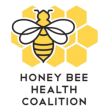Honey Bee Facts
Honey bees are interesting insects. Explore below to learn more about these bee-utiful creatures.
Did you Know?
Bee facts to fascinate you!
About Honey Bees
The honey bee is an amazing insect.
Honey bees, of European origin, are not native to the USA. Honey bees are not aggressive by nature, and will not sting unless protecting their hive from an intruder or are unduly provoked. A honey bee can fly for up to six miles, and as fast as 15 miles per hour. The bees’ buzz is the sound made by their wings which beat 11,400 times per minute.
The bee’s brain is oval in shape and about the size of a sesame seed, yet it has a remarkable capacity to learn and remember things. For example, it is able to make complex calculations on distance traveled and foraging efficiency. Honey bees communicate with one another by dancing.
The honey bee is the only insect that produces food eaten by man.
The Hive
The honeybee hive is perennial.
Although quite inactive during the winter, the honeybee survives the winter months by clustering for warmth. By self-regulating the internal temperature of the cluster, the bees maintain 93 degrees Fahrenheit in the center of the winter cluster (regardless of the outside temperature).
Organized Society
Honeybees play specific roles.
Honeybees represent a highly organized society, with various bees having very specific roles during their lifetime: e.g., nurses, guards, grocers, housekeepers, construction workers, royal attendants, undertakers, foragers, etc.
Pollination
Agriculture depends greatly on the honey bee.
Honey bees account for 80% of all insect pollination. Bees collect 66 lbs of pollen per year, per hive. A honey bee visits 50 to 100 flowers during a collection trip.
When a bee finds a good source of nectar it flies back to the hive and shows its friends where the nectar source is by doing a dance which positions the flower in relation to the sun and hive. This is known as the ‘waggle dance.’
Honey
Honey is used by the bees for food all year long.
There are many types, colors and flavors of honey, depending upon its nectar source. The bees make honey from the nectar they collect from flowering trees and plants. Honey bees must gather nectar from two million flowers to make one pound of honey. One bee has to fly about 90,000 miles, three times around the globe, to make one pound of honey. The average bee will make only
1/12th of a teaspoon of honey in its lifetime.
Honey is hygroscopic and has antibacterial qualities. Eating local honey can fend off allergies. Beeswax, secreted from honey bee glands, has many applications, including drugs, cosmetics, furniture polish and candles.
Royal Jelly
The good stuff.
Royal Jelly, the powerful, milky substance that turns an ordinary bee into a Queen Bee, is made of digested pollen and honey or nectar mixed with a chemical secreted from a gland in a nursing bee’s head.
Learn more....Explore your options
About Beekeeping
About Honey
EMBA Events
Join Now!
ABOUT EMBA
Located in St. Louis, Missouri, the Eastern Missouri Beekeepers Association (EMBA) is a volunteer-based organization that trains beginning and advanced beekeepers, promotes beekeeping within the region; and provides networking opportunities for beekeepers, old and new. Educating beekeepers for the last 86 years!
Wyoming Street
St. Louis, MO 63118
314-451-2335
Copyright © 2013-2023.
All rights reserved.
Eastern Missouri Beekeepers Association.



